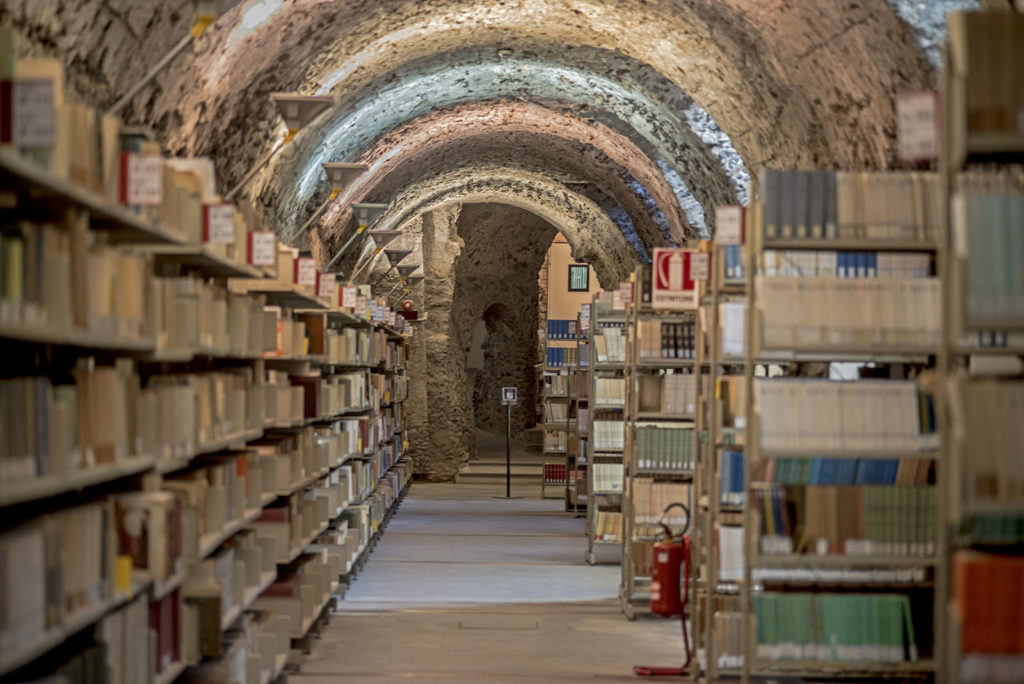The work of the Benedictines not only followed religious and charitable commitments, but scientific undertakings, too. The monastery’s first collection of books was probably created at its foundation and used exclusively by the monks, who followed the strict Benedictine rule also through the study of literature and science.
They established relations with the city’s cultural institutions, opening to and acquiring from it important collections over the centuries.
There were around 24 thousand volumes of rare, ancient and modern manuscripts and parchments; this cultural wealth meant that the monks were great connoisseurs and disseminators of ancient knowledge, focused, at the same time, on the future.
After the eruption of 1669 and the earthquake of 1693 the monastery suffered great losses, but the monks managed to save part of the collection, which they looked after until the library was rebuilt. Located in most of the 18th-century wing, the construction of the new main hall of the library was entrusted to
Giovanni Battista Vaccarini
, who designed it with typical late Baroque features.
In fact, the monumental hall with a central elliptical plan is an authoritative room almost completely covered by orderly wooden bookshelves that reach the decorated vault, occupying the spaces up to the circular windows that illuminate the vast room from above.
In addition, the monastery had five other sumptuous rooms used for the
Benedictine Museum
, designed to closely match the library.
Today the former museum rooms are home to the library’s consultation and reading rooms.
